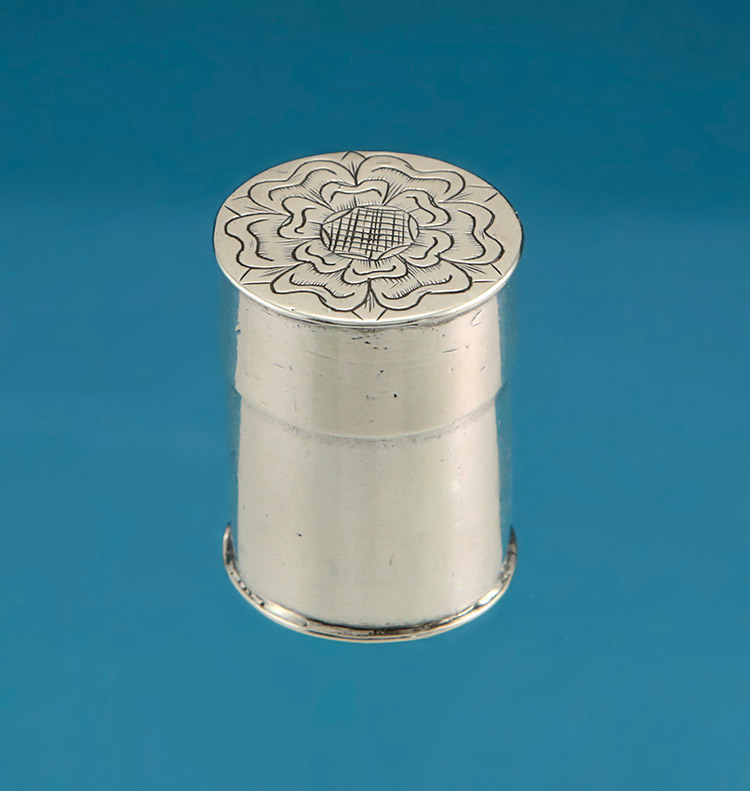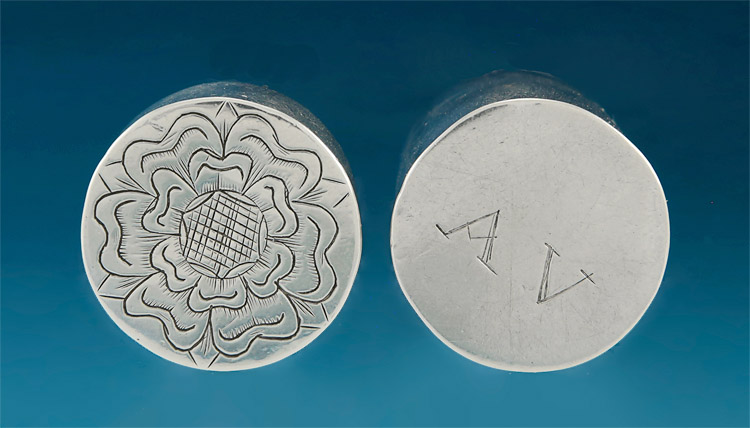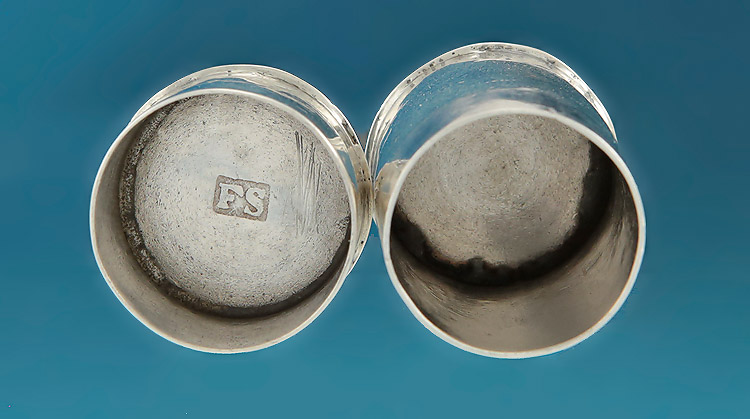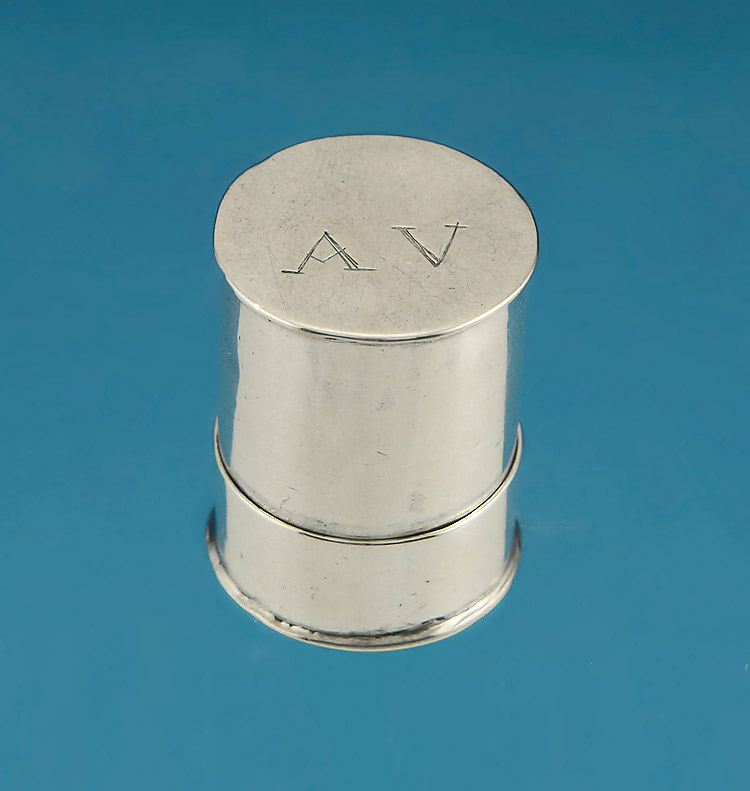ADDITIONAL HERALRIC NOTES concerning the WHITE ROSE & THE JACOBITES
John Tunesi of Liongam,
Beacon Geneolocigan & Heraldric Research, UK
This late 17th Century English Sterling Silver Cylindrical Counter Box may well have been made by either Francis Servant I or II, of Bideford in the County of Devon. The Servants were a Huguenot family of silversmiths who had escaped persecution in France and settled in England after Revocation of the Edict of Nantes in 1685. They were said to be active around the end of the 17th Century and into the 18th Century. Many of their pieces were assayed at the City of Exeter in their adopted county. Upon the balance of probability and without evidence to the contrary the significance of the engraving of a heraldic rose upon the lid of this box undoubtedly bespeaks of a Jacobean connection or influence.
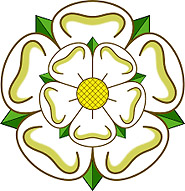
The white rose of York (above) was the premier Jacobite emblem that was employed to show adherence to the House of Stuart.
This adherence to the Jacobite cause is also evidenced most amply upon the use of such a rose on drinking glasses and glassware during this period in British history. It is known that at least one other piece by Francis Servant (either I or II), a silver patch box was also engraved upon its lid with a 6-petaled heraldic rose.
________________
It is not surprising that such 'Jacobite' pieces in silver and other media were made in England's West Country, for during the latter years of the 17th Century and into the first two decades of the 18th Century, the Counties of Cornwall, Devon and Somerset (together with other neighbouring counties) were hotbeds of Jacobite activity - with many of the gentry families of these counties supporting the restoration of the Stuarts to the British throne. The last Jacobite uprising in the England's most westerly county, Cornwall took place in 1715, the same year as the greater Jacobean rising led by Prince James Francis Edward Stuart, the Old Pretender (born 10th June 1688 died 1st January 1766) to attempt to regain the thrones of England, Ireland and Scotland for the exiled House of Stuart.
In passing, the White Rose of York that the Jacobite cause adopted, is not the same as the 'Tudor Rose'-
which is a combination of the Red Rose of Lancaster and the White Rose of York,
wherein the Yorkist White Rose is laid over the Lancastrian Red Rose to signify the union of the Houses of Lancaster and York.
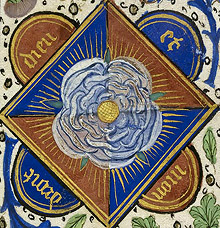
Also it must not be presumed that even well educated or fairly well-educated individuals necessarily knew the make-up of the conventional heraldic rose, whether red, white or any other tincture. As is evidenced by the illustration above, taken from a manuscript from the reign of King Edward IV, the White Rose of York is shown en soleil (with rays of the sun). The rose itself does not conform to the conventional view of the heraldic rose we know today. Such representations both conventional and unconventional are found throughout British heraldry, so it is often very difficult to pin down what, or what is not, a Jacobite White Rose of York. The Jacobite White Rose (having 6 petals) is often depicted on glassware as a rose from nature rather the stylised heraldic rose. This particular rose is said to be the White Rose of Scotland (Scots Rose, Burnet Rose) Rosa spinosissima (Syn. Rosa pimpinellifolia), family Rosaceae.
Although, not conclusive, it should be borne in mind what Grant R. Francis stated on page 252 in his Jacobite Drinking Glasses and their Relation to the Jacobite Medals (British Numismatics Journal 16 1921-21 pages 247-83) that
'On all other Jacobite glasses the rose is represented with six, seven or eight petals, and any glass of the period, genuinely so engraved, whether it bears any other engraving or motto, or not, may safely be regarded as a relic of the Jacobite movement.' Whether this particular theory still holds water today, I am not too sure as Jacobite scholarship has undoubtedly moved on a pace or at least one would assume so. That being said, heraldry and the use of overtly heraldry symbols often throws up such anomalies and contradictions as detailed above. |
